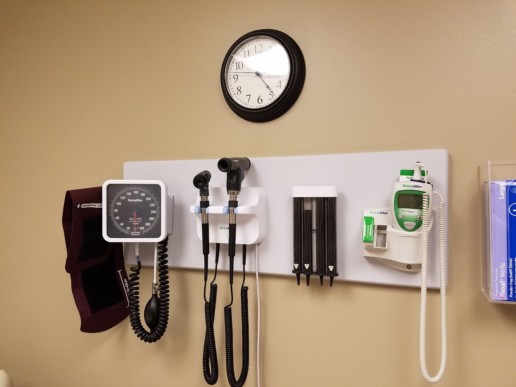Competing for talent in a Gen Z world
As 2018 progresses, HR managers are well advised to start stepping out of their comfort zones. Because Generation Z is beginning to surge into the workplace, forcing the reinvention of everything from benefits to recruiting. Your relevance in the war for talent may hang in the balance.
You’ve been hearing for some time now about the challenge of engaging a multi-generational workforce. But it’s time to think beyond the Millennials, and take a good look at the Gen Zs (born after 1995). They have a whole new set of expectations and values that are forcing employers to re-evaluate how they recruit, retain and, especially, engage their people. Start working on your battle plan in 2018 (and beyond) to avoid losing the talent battles.
They have decided views on how they expect to be treated and managed and how they respond if they don’t think their employer is measuring up. It’s a function of their upbringing in a hyper-connected world. According to Pew Research, only 14 percent of U.S. adults had Internet access in 1995, but that exploded to 87 percent by 2014. Small wonder that for the Zs, it’s the always-on and available tech-enabled connections to networks of people and information that rule. It’s how Zs learn and solve problems and it influences their expectations.
Here’s what it all means for your workplace and how you will need to compete for talent moving forward.
Legacy benefits and old attitudes need replacing now
The Zs aren’t merely connected. They share aggressively. Studies show that if their experiences – with a brand or a product or an employer – are negative, this generation will happily tell everybody about it online, including on Glass Door, a fast growing site that reviews millions of employers. That makes it important to foster a positive culture and work environment, and provide the types of benefits that will attract the Zs, keep them happy and ideally inspire them to spread the word.
To that end, take a long, hard look at your employee benefits: Too many employers still offer legacy employee packages that have changed little in the last two decades. Will they be good enough to woo the Zs and keep them satisfied? In fact, the Zs are motivated by the total deal, not just financial compensation. They want unique benefits that are personalized for them right down to the individual level.
Think about the 22-year-old who’s working in an urban setting, maybe with a pet at home, doesn’t have a lot of time to shop and is saddled with student loans. What are the priorities? A plan offering vision, life or disability insurance? Or a benefits package that provides a personal concierge and maybe dog walker, student loan repayment and an identity theft program, too? Best-of-class employers will offer up a robust mix of traditional and non-traditional benefits that cater to the individual employee’s lifestyle needs.
VR and gamification: Critical tools in winning Gen Z talent
Even as the Zs mature, there’s a trend toward a blending of personal and work lives as outside influences bleed into the workplace. When it comes to virtual reality, this generation of digital natives is enthusiastic over its potential use in the workplace.
There’s been a 250 percent jump in VR companies since 2012 and the technology’s significance is for more than just promoting productivity by connecting people in different locations for virtual meetings. It’s also a good recruiting tool, a way of letting prospective hires “experience” your environment so they are better able to tell before they take a job if it’s right for them.
Gamification is another Z activity that’s bleeding into business and affecting recruitment and hiring. Picture Silicon Valley’s “code-offs,” where prospective developers compete during a set time period to find the best solution to a specific design challenge. The winner gets the job. It certainly makes resume screening seem obsolete by comparison.
This incoming generation has a lot to offer employers who value the kind of fresh perspective it represents. The next big challenge will be reflecting that appreciation in creative approaches to winning and keeping their hearts and minds.
Read the article.
Source:
Barone M. (1 March 2018). "Competing for talent in a Gen Z world" [Web Blog Post]. Retrieved from address https://www.benefitspro.com/2018/03/01/surge-of-gen-z-workers-changing-how-employers-comp/
Pay-to-shop health care incentives gaining traction
Laurie Cook went shopping recently for a mammogram near her home in New Hampshire. Using an online tool provided through her insurer, she plugged in her ZIP code. Up popped facilities in her network, each with an incentive amount she would be paid if she chose it.
Paid? To get a test? It’s part of a strategy to rein in health care spending by steering patients to the most cost-effective providers for non-emergency care.
State public employee insurance programs were among the early adopters of this approach. It is now finding a foothold among policymakers and in the private sector.
Scrolling through her options, Cook, a school nurse who is covered through New Hampshire’s state employee health plan, found that choosing a certain facility scored her a $50 check in the mail.
She then used the website again to shop for a series of lab tests. “For a while there, I was getting a $25 check every few weeks,” said Cook. The checks represented a share of the cost savings that resulted from her selections.
Lawmakers in nearby Maine took the idea further, recently enacting legislation that requires some private insurers to offer pay-to-shop incentives, part of a movement backed by a conservative foundation to get similar measures passed nationally.
Similar proposals are pending in a handful of other statehouses, including Virginia, West Virginia and Ohio.
“If insurance plans were serious about saving money, they would have been doing this stuff years ago,” said Josh Archambault, a senior fellow at the Foundation for Government Accountability, a limited-government advocacy group based in Naples, Fla., that promotes such “right-to-shop” laws. “This starts to peel back the black box in health care and make the conversation about value.”
Still, some economists caution that shop-around initiatives alone cannot force the level of market-based change needed. While such shopping may make a difference for individual employers, they note it represents a tiny drop of the $3.3 trillion spent on health care in the U.S. each year.
“These are not crazy ideas,” said David Asch, professor of medicine, medical ethics and health policy at the Penn Medicine Center for Health Care Innovation in Philadelphia. But it’s hard to get consumers to change behavior — and curbing health care spending is an even bigger task. Shopping incentives, he warned, “might be less effective than you think.”
If they achieve nothing else, though, such efforts could help remove barriers to price transparency, said Francois de Brantes, vice president and director of the Center for Value in Health Care at Altarum, a nonprofit that studies the health economy.
“I think this could be quite the breakthrough,” he said.
Yet de Brantes predicts only modest savings if shopping simply results in narrowing the price variation between high- and low-cost providers: “Ideally, transparency is about stopping folks from continuously charging more.”
Among the programs in use, only a few show consumers the price differences among facilities. Many, like the one Cook used, merely display the financial incentives attached to each facility based on the underlying price.
Advocates say both approaches can work.
“When your plan members have ‘skin in the game,’ they have an incentive to consider the overall cost to the plan,” said Catherine Keane, deputy commissioner of administrative services in New Hampshire. She credits the incentives with leading to millions of dollars in savings each year.
Several states require insurers or medical providers to provide cost estimates upon patients’ requests, although studies have found that information can still be hard to access.
Now, private firms are marketing ways to make this information more available by incorporating it into incentive programs.
For example, Vitals, the New Hampshire-based company that runs the program Cook uses, and Healthcare Bluebook in Nashville offer employers — for a fee — comparative shopping gizmos that harness medical cost information from claims data. This information becomes the basis by which consumers shop around.
Crossing Network Lines
Maine’s law, adopted last year, requires insurers that sell coverage to small businesses to offer financial incentives — such as gift cards, discounts on deductibles or direct payments — to encourage patients, starting in 2019, to shop around.
A second and possibly more controversial provision also kicks in next year, requiring insurers, except HMOs, to allow patients to go out-of-network for care if they can find comparable services for less than the average price insurers pay in network.
Similar provisions are included in a West Virginia bill now under debate.
Touted by proponents as a way to promote health care choice, it nonetheless raises questions about how the out-of-network price would be calculated, what information would be publicly disclosed about how much insurers actually pay different hospitals, doctors or clinics for care and whether patients can find charges lower than in-network negotiated rates.
“Mathematically, that just doesn’t work” because out-of-network charges are likely to be far higher than negotiated in-network rates, said Joe Letnaunchyn, president and CEO of the West Virginia Hospital Association.
Not necessarily, counters the bill’s sponsor, Del. Eric Householder, who said he introduced the measure after speaking with the Foundation for Government Accountability. The Republican from the Martinsburg area said “the biggest thing lacking right now is health care choice because we’re limited to our in-network providers.”
Shopping for health care faces other challenges. For one thing, much of medical care is not “shoppable,” meaning it falls in the category of emergency services. But things such as blood tests, imaging exams, cancer screening tests and some drugs that are administered in doctor’s offices are fair game.
Less than half of the more than $500 billion spent on health care by people with job-based insurance falls into this category, according to a 2016 study by the Health Care Cost Institute, a nonprofit organization that analyzes payment data from four large national insurers. The report also noted there must be variation in price between providers in a region for these programs to make sense.
Increasingly, though, evidence is mounting that large price differences for medical care exist — even among rates negotiated by the same insurer.
“The price differences are so substantial it’s actually scary,” said Heyward Donigan, CEO of Vitals.
At the request of Kaiser Health News, Healthcare Bluebook ran some sample numbers for a Northern Virginia ZIP code, finding the cost of a colonoscopy ranged from $670 to $6,240, while a knee arthroscopy ranged from $1,959 to $20,241.
Another challenge is the belief by some consumers that higher prices mean higher quality, which studies don’t bear out.
Even with incentives, the programs face what may be their biggest challenge: simply getting people to use a shopping tool.
Kentucky state spokeswoman Jenny Goins said only 52 percent of eligible employees looked at the shopping site last year — and, of those, slightly more than half chose a less expensive option.
“That’s not as high as we would like,” she said.
Still, state workers in Kentucky have pocketed more than $1.6 million in incentives — and the state said it has saved $11 million — since the program began in mid-2013.
Deductibles, the annual amounts consumers must pay before their insurance kicks in and are usually $1,000 or more, are more effective than smaller shopping incentives, say some policy experts.
In New Hampshire, it took a combination of the two.
The state rolled out the payments for shopping around — and a website to look for best prices — in 2010. But participation didn’t really start to take off until 2014, when state employees began facing an annual deductible, said Deputy Commissioner Keane.
Still, the biggest question is whether these programs ultimately cause providers to lower prices.
Anecdotally, administrators think so.
Kentucky officials report they already are witnessing a market response because providers want patients to have an incentive to choose them.
“We do know providers are calling and asking, ‘How do I get my name on that list’ [of cost-effective providers]?” said Kentucky spokeswoman Goins. “The only way they can do that is to negotiate.”
Read the article.
Source:
Appleby J., Kaiser Health News (5 March 2018). "Pay-to-shop health care incentives gaining traction" [Web blog Post]. Retrieved from address https://www.benefitspro.com/2018/03/05/pay-to-shop-health-care-incentives-gaining-tractio/
Spot the differences between productivity and busyness
Productivity and busyness are often used interchangeably. This is a mistake. When you think about it, you can be busy and still get nothing really done.
Productivity is efficiently using time to change something, whether it be improving a project or taking care of an errand. Efficiency is the key word here, as no one would consider, say, spending an entire day writing a letter efficient.
Busyness is being occupied with a particular activity to the point where it becomes a priority. Spending an entire day writing a letter is busyness, but it wouldn’t be considered productive. Yet, we can say “It was a busy day” and it could be, mistakenly, interpreted as productivity.
The difference matters because productivity requires strategy: What works best, what is most important now, what matters over other tasks and other standards. Busyness prioritizes going forward, whether or not it is the best thing to do right now.
Being productive rather than busy requires stopping, strategizing and consideration before taking action. To be truly productive, you must not be afraid of pausing – and pausing feels like the opposite of being busy. You must let go of the need to feel busy.
One other simple tell: Productivity tends to give energy, while busyness tends to take it away. Getting things accomplished creates momentum as well as confidence, while doing busy work often makes inertia and frustration since it usually doesn’t lead to progress.
Read the article.
Source:
Brown D. (21 February 2018). "Spot the differences between productivity and busyness" [Web Blog Post]. Retrieved from address https://workwell.unum.com/2018/02/spot-the-differences-between-productivity-and-busyness/
Two opportunities created by association health plans
The new regulations around association health plans (AHPs) — which loosen restrictions for small businesses, franchises and associations — create two distinct opportunities in the benefits industry.
The first is for brokers, who will be crucial advisors to employers eligible for the new coverage options now available.
The second opportunity is for benefits and HR tech vendors, who will be instrumental in managing the transactional and administrative challenges that would otherwise hinder AHP success.
What challenges do association health plans represent? Let’s consider an example — the Nashville Hot Chicken restaurant franchise.
Let’s say Nashville Hot Chicken has 1,000 franchisees, each with five full-time employees. Before AHP options became available to this organization, these five-employee groups would either have had to pursue small group coverage, or employees would have had to find individual plans.
Both options likely would have been prohibitively expensive for the organization or the employees. With the new AHP regulations, however, these 1,000 franchisees may be able to pull all 5,000 workers together and create a large group benefits plan.
In doing so, they would reap the advantages of collective purchasing, just like large groups do. However, this AHP would not work like a regular group plan.
If a regular group has 5,000 employees, they would all be part of a centrally-operated payroll system and the insurance companies would receive just one check for all of the employees enrolled at the group. But under an AHP of franchisees, all the payroll systems would operate independently, and there is no clear, centralized entity to pay carriers.
This creates a massive administrative headache for Nashville Hot Chicken corporate, as well as all the individual franchise owners. In other words, who is going to manage the AHP?
Here’s where the brokers come in. Employers need brokers to walk them through all the complexities of AHPs, including sourcing carriers, third-party vendors, and compliance needs.
It would also be incredibly impractical to manage 5,000 employees through 1,000 separate businesses without a benefits and HR platform.
But brokers can provide a solution to this challenge by adopting a platform. With a benefits and HR system, the various administrative differences from franchisee to franchisee can be accounted for, while still allowing the 5,000-life group to enroll in the group offering.
By removing the administrative headache, benefits tech makes AHPs a real option for Nashville Hot Chicken. But it also gives the tech-savvy broker a clear leg up on the competition. A broker without a tech solution will be at a severe disadvantage for Nashville Hot Chicken’s business compared to a broker who has a platform.
So as small employers, franchisees and industry associations band together for group coverage, benefits tech can give brokers a competitive differentiator for this new business segment.
Read the article.
Source:
Tolbert A. (1 March 2018). "Two opportunities created by association health plans" [Web Blog Post]. Retrieved from address https://www.benefitspro.com/2018/03/01/two-opportunities-created-by-association-health-pl/
Boring Little Miracles
From SHRM, this article goes into the importance of "boring little miracles" in the workplace
The success of an organization is often borne on the backs of people performing boring little miracles.
Boring little miracles don’t make headlines. They, perhaps purposely so, fly under the radar, disguised as everyday tasks performed under pressure or work that doesn’t feel like much to the person performing it. People performing boring little miracles get the job done and then pack up and go home like it was no big deal.
But it IS a big deal.
Boring little miracles add up over time. They are the compounding interest of organizational productivity, and they are performed by people who invest early and often. These miracles sneak up on you and can quickly become the expectation rather than the exception.
Boring little miracles are still miracles.
They aren’t jobs or tasks that are easy, they just appear that way because of the person doing the work. Highly experienced and highly trained professionals doing what they do don’t have to sweat the work that other people dread. They just do it.
“Hey, she’s always been good at this stuff”," or “Well, he’s the only one who knows how to do it,” you might hear around the office. But you shouldn’t take it for granted.
Recognize and reward the behavior you want to see more of. Make space for the work that grabs headlines AND the work that doesn’t in your rewards and recognition structure. Pay special attention to the people who prefer to stay out of the spotlight; honor their work and contributions because it is important, not necessarily because it grabs attention.
Make recognition for this work specific. Make it count.
Do it well enough, and your team and organization might just become a boring little miracle itself.
Read the article.
Source:
Escobar C. (26 February 2018). "Boring Little Miracles" [Web Blog Post]. Retrieved from address https://blog.shrm.org/blog/boring-little-miracles
The decline of the employment drug test
Employers are struggling to hire workers in tightening U.S. job market. Marijuana is now legal in nine states and Washington, D.C., meaning more than one in five American adults can eat, drink, smoke or vape as they please. The result is the slow decline of pre-employment drug tests, which for decades had been a requirement for new recruits in industries ranging from manufacturing to finance.
As of the beginning of 2018, Excellence Health Inc., a Las Vegas-based health care company with around 6,000 employees, no longer drug tests people coming to work for the pharmaceutical side of the business. The company stopped testing for marijuana two years ago. “We don’t care what people do in their free time,” said Liam Meyer, a company spokesperson. “We want to help these people, instead of saying: ‘Hey, you can’t work for us because you used a substance,’” he added. The company also added a hotline for any workers who might be struggling with drug use.
Last month, AutoNation Inc., the largest U.S. auto dealer, announced it would no longer refuse job applicants who tested positive for weed. The Denver Post, owned by Digital First Media, ended pre-employment drug testing for all non-safety sensitive positions in September 2016.
So far, companies in states that have legalized either recreational or medicinal marijuana are leading the way on dropping drug tests. A survey last year by the Mountain States Employers Council of 609 Colorado employers found that the share of companies testing for marijuana use fell to 66 percent, down from 77 percent the year before.
Drug testing restricts the job pool, and in the current tight labor market, that’s having an impact on productivity and growth. In surveys done by the Federal Reserve last year, employers cited an inability by applicants to pass drug tests among reasons for difficulties in hiring. Failed tests reached an all-time high in 2017, according to data from Quest Diagnostics Inc. That’s likely to get worse as more people partake in state-legalized cannabis.
“The benefits of at least reconsidering the drug policy on behalf of an employer would be pretty high,” said Jeremy Kidd, a professor at Mercer Law School, who wrote a paper on the economics of workplace drug testing. “A blanket prohibition can’t possibly be the most economically efficient policy.”
Companies are having a hard enough time hiring, with unemployment hovering around 4 percent. “Employers are really strapped and saying ‘We’re going to forgive certain things,’” said James Reidy, a lawyer that works with employers on their human resources policies. Reidy knows of a half-dozen other large employers that have quietly changed their policies in recent years. Not all companies want to advertise the change, fearing it might imply they are soft on drugs. (Even former FBI director James Comey in 2014 half-joked about the need for the bureau to re-evaluate its drug-testing policy to attract the best candidates.)
Why the change? Pre-employment testing is no longer worth the expense in a society increasingly accepting of drug use. A Gallup poll in October found that 64 percent of Americans favor legalization. That’s the most since the company first started asking the question in 1969, when only 12 percent supported changing the plant’s status. Drug tests costs from $30 to $50 a pop, but the potential costs to an employer are far greater than the actual test.
In addition to helping ease the labor market, eliminating drug testing could have even broader benefits for the economy, said Kidd. Employers could hire the best, theoretically most-productive workers, he said, instead of rejecting people based on their recreational habits. Companies have said they lose out to foreign competitors because they can’t find people who can pass drugs tests, a particularly acute problem in the areas most affected by the opioid crisis.
Some jobs, such as those involving the use of heavy machinery, will always require drug tests. Excellence Health still drug-tests any employee working on a government contract, even in states where weed is legal. Companies are also reserving the right to test after an accident or if an employee comes to work notably impaired.
Not all companies are ready to change course. Restaurant Brands International Inc., which owns Burger King, hasn’t altered its corporate marijuana policy, said Chief Executive Officer Daniel Schwartz. Ford Motor Co. still treats pot as an illegal substance, according to a company spokeswoman.
Weed-averse employers have a notable ally: Attorney General Jeff Sessions. A longtime opponent of legalization, Sessions rescinded in January the Obama-era policies that enabled state-legalized cannabis industries to flourish. The uncertainty caused by the Justice Department’s actions may discourage companies from making changes.
Employers can also get discounts on workers’ compensation insurance for maintaining a “drug-free workplace” by, in part, drug-testing workers. But the types of workplaces forgoing pre-employment tests already enjoy relatively small savings. A job in an office setting, for example, won’t have very many workers’ compensation claims, compared to a factory. The money saved by meeting the qualifications for a drug-free zone isn’t worth it.
“We assume that a certain level of employees are going to be partaking on the weekends,” said Reidy, the employment lawyer. “We don’t care. We’re going to exclude a whole group of people, and we desperately need workers.”
Read the article.
Source:
Greenfield R, Kaplan J. (5 March 2018). "The decline of the employment drug test" [Web Blog Post]. Retrieved from address https://www.benefitspro.com/2018/03/05/the-decline-of-the-employment-drug-test/
Millennials, tech industry driving adoption of paid leave programs
More employers are voluntarily offering paid leave benefits to win over millennial workers in an increasingly competitive marketplace, but costs related to workforce management and thin profit margins in many industries have hampered widespread voluntary adoption, according to The Paid Leave Project’s report, “Emerging business trends in paid family medical leave.”
The project, an initiative managed by “action tank” Panorama, interviewed representatives from 470 large U.S. employers across 23 industries to find top reasons for voluntarily offering paid leave programs – as well as main barriers to offering such benefits.
The leading factor that prompts most companies to voluntarily offer the benefit is employee demand, particularly from millennial workers who hear about other companies’ paid leave policies from the media as well as from their friends and family members who receive such benefits. More than 40 percent of companies that already have paid leave cited this as a driver.
Some employers say they want to be considered a “best employer” within their industry. Says a representative from a manufacturing company: “A company can choose to be in the middle of the pack, but we don’t see that as a competitive advantage. We want to be leaders.”
Employers in specialized industries or geographies with a tight labor market say a compelling benefits package, including paid leave, is key to attracting and retaining top talent. “The war for talent is pretty bad,” says a representative from an aerospace company. “We are taking a deeper dive at looking to expand (our) total rewards.”
The tech industry is leading the way, with employers like Netflix and Spotify, respectively offering 52 weeks and 26 weeks of parental leave. Part of this is because other industries are increasingly needing tech talent as the “digital revolution” is now transforming their own sector, including transportation, retail, telecommunications, healthcare, and manufacturing. Some companies in these industries are directly reaching out to technology companies to benchmark against their benefits.
The main challenge to offering paid leave is cost, including paying for a resource to temporarily fill a role while also funding the employee’s leave,
“Employers from retail, manufacturing, transportation and others with a high concentration of hourly workers indicated that coverage is particularly challenging for their sectors,” the authors write. “Given the nature of production and frontline roles, it can be logistically complex for such workers to cover their coworkers’ duties in addition to their own.”
Those industries with low profit margins, such as retail and transportation, find it particularly difficult consider offering paid leave because it just isn’t financially viable, they contend.
Says a representative from a nationwide retailer: “How can I offer paid leave when I can’t even offer comprehensive healthcare, including dental insurance?”
However, a handful of employers in these industries who have embraced paid leave are seeing positive results, including outdoor clothing and gear retailer Patagonia, according to the report.Over the last five years, 100 percent of the women who have had children while working at Patagonia have returned to work. This has led to a balanced workforce and about 50 percent representation of women in all management levels.
For those who offer paid leave, many are also implementing “wrap-around” supports to complement the benefits, such as flexible work schedules to ramp on and off when employees return from leave, providing private locations for mothers to breastfeed, and employee resource groups for new parents. More and more employers are also expanding paid leave for those are providing caregiver services to elderly or disabled family members.
Organizations such as DMEC, the Integrated Benefits Institute (IBI), and providers such as LeaveLogic offer valuable research, tools, and resources for employers as they roll out or expand benefits, according to the report. Moreover, The Paid Leave Project, in collaboration with the Boston Consulting Group, created a comprehensive paid leave Playbook for employers, which includes cost calculator and industry benchmarking data; paid leave policy template; tips for employers in states with new paid leave laws were recently added; and paid Leave best practices and case studies of companies that offer the benefit.
The latest report builds on earlier work by The Paid Leave Project and the Boston Consulting Group, which in 2017 released “Why Paid Family Leave Is Good Business,” a summary report from initial research into the paid leave practices of more than 250 U.S. companies.
In 2018, The Paid Leave Project will focus its research on industry-specific dynamics, the challenges for companies in states with current or pending legislation, and how employers are tracking paid leave data, results, and return on investment.
Read the article.
Kuehner-Hebert K. (2 March 2018). "Millennials, tech industry driving adoption of paid leave programs" [Web Blog Post]. Retrieved from address https://www.benefitspro.com/2018/03/02/millennials-tech-industry-driving-adoption-of-paid/
3 simple ways to get motivated
Getting and staying motivated can be tough, whether you are coming back from vacation, dealing with something you’d rather avoid or getting focused on a Monday. Not every day will be super productive, and there is no sense in punishing yourself because of it, but there are three great ways to get back on track.
One way is to take the simplest task and make it even simpler. For example, if you have to write an email, then focus on doing the first sentence. Make writing the first sentence your goal. It may feel ridiculously easy, which is the point: Once you write that first sentence, then you will likely have the confidence to begin on the second sentence, and so on.
Another approach is to think about being in bed, tonight, right before you go to sleep. What did you accomplish today? Did you feel good about what got done? What do you wish you had gotten done so you wouldn’t be worried about doing it tomorrow? Now you can stop imagining: It’s wonderful that you still have the day ahead of you and you can get things done now.
Lastly, work on your next task for only five minutes. It will be a focused five minutes, which means no multitasking. Set an alarm as necessary. Chances are that the five minutes will go by quickly and, if you like, you can set the alarm for another five minutes.
Our motivation is usually hampered by either inertia, like when we have taken a break, or by timidity, like when we are intimidated by a major goal. By using these three methods, you can move towards success and focus on the next small step towards your big successful goal.
Read the article.
Source:
Brown D. (21 February 2018). "3 simple ways to get motivated" [Web Blog Post]. Retrieved from address https://workwell.unum.com/2018/02/3-simple-ways-to-get-motivated/
DOL cracks down on efforts to find missing retirement plan participants
In this article from Benefits Pro, the DOL auditors are taking action on missing participants in retirement plans.
The Department of Labor’s auditors are pushing harder on plan sponsors to make better efforts to find missing terminated vested participants in retirement plans. In return, there’s a call for more guidance on just how far sponsors have to go to do so.
According to a report in Pensions & Investments, the matter has become more urgent in the wake of MetLife’s experience. After the company had “lost track” of some 13,500 participants, the DOL entered the picture. The company’s earlier efforts to find those lost participants were deemed unacceptable, and then state and federal inquiries began.
But DOL auditors, according to a letter from the American Benefits Council to Deputy Assistant Secretary of Labor Timothy Hauser last fall requesting formal rulemaking on comprehensive guidance for plan fiduciaries, have been “inconsistent and alarming” in routine examinations.
The report says, “Some auditors said that failure to find a missing participant was a breach of fiduciary duty, or forfeiting funds back into a plan until participants are found is a prohibited transaction, and plan sponsors could be penalized. Auditors also have insisted that sponsors try different search methods every year or reach out to friends and former colleagues of the missing participant or through social media. Some plan sponsors have been told they must do ‘whatever it takes’ to find participants who are missing or not responding to communications.”
Large defined benefit plans are creating the loudest outcry, according to members reaching out to the ERISA Industry Committee in Washington on the issue. “It’s frustrating for them because there is just a lack of guidance on what activities they have to engage in, and how long they have to be engaged in it,” Will Hansen, senior vice president of retirement and compensation policy, is quoted saying in the report.
DOL officials are aware of the lack of guidance. A DOL spokesman says in the report that “the agency places a priority on consistent actions across our compliance assistance and enforcement activities, and will continue to work with plans and plan sponsors to connect retirees and beneficiaries with their pensions.”
Still, given the agency’s focus on employers’ responsibilities, experts say that employers should try to get ahead of the issue, guidance or not. The report cites David Rogers, partner at Winston & Strawn LLP in Washington, saying, “Given the potential penalties involved and the need for a coordinated response, it is a good practice to have a missing participants policy and designated persons within the organization who make regular efforts to keep participant information current.”
In addition, it quotes Norma Sharara, a principal with Mercer’s Washington resource group, saying, “The rational plan sponsor would be well advised to up their game. At least revisit the issue so when someone comes knocking your door, you are prepared. All along you need to be in constant contact with anybody you are holding money for. Somebody has to be responsible and the Labor Department is placing the burden on the shoulders of the employer.”
On March 1, Senators. Elizabeth Warren, D-MA, and Steve Daines, R-MT, reintroduced the Retirement Savings Lost and Found Act, bipartisan legislation that would create a national online lost-and-found for retirement accounts. The bill is supposed to make it easier for participants to find accounts, as well as for employers to connect with former employees. Employers could also invest abandoned accounts in target-date funds more easily, the report said.
Read the article.
Source:
Satter M. (5 March 2018). "DOL cracks down on efforts to find missing retirement plan participants" [Web Blog Post]. Retrieved from address https://www.benefitspro.com/2018/03/05/dol-cracks-down-on-efforts-to-find-missing-retirem/
Eligibility, lack of plans keep millennials from retirement saving
As millennials reach the age to save for retirement, there is a clear lack-of-knowledge in the arena of what plans they need and how to save for them with the continuing costs of their lifestyles. In this article, we take a look at why this is.
Millennials are way behind on retirement savings, but it has nothing to do with self-indulgence or feasts on avocado toast.
Instead, what they actually need are retirement plans, and earlier eligibility to save in them.
A new report from the National Institute of Retirement Security highlights millennials’ precarious retirement futures with the news that only a third are saving for retirement. It’s not because they don’t want to, or are being extravagant, because when the numbers are crunched they actually save at rates equal to or higher than those of their elders—even if not as many of them can do so.
Millennials are getting a raw deal. Not only are traditional defined benefit plans disappearing, with the likelihood that a millennial might actually be able to participate in one, they’re worried that Social Security—which runs way behind the cost of living anyway—will be of even less help to them in the future as an income replacement than it already is for current retirees. Add to that the fact that more than half of millennials are expected to live to age 89 or even older, and they have the added worry of outliving whatever savings they might have managed to stash.
In fact, millennials need to save way more than their elders to stand a chance of having a retirement that honors the meaning of the word. Says the report, “[S]ome experts estimate that millennials will need to make pretax retirement plan contributions of between 15 percent to 22 percent of their pretax salary, which at 22 percent, is more than double the recommendation of previous generations.”
They’re viewed as irresponsible, but 21 percent are already worried about their retirement security, says the report, and while 51 percent of GenXers and boomers contribute to their own retirement plans, just 34.3 percent of millennials participate in an employer’s plan, although 66 percent work for bosses that offer such plans.
In fact, 66.2 percent of millennials have no retirement savings at all. Zip, zilch, zero. And millennial Latinos? A whopping 83 percent have a goose egg, not a nest egg. Latinos have it much worse, incidentally, than any other millennials group, with just 19.1 percent of millennial Latinos and 22.5 percent of Latinas participating in an employer-sponsored plan, compared with 41.4 percent of Asian men and 40.3 percent of millennial white women—who have the highest rates of participation in a retirement plan.
Despite working for an employer who provides workers with a retirement plan, millennials don’t always have a way to save, since said employer may have set barriers in place to prevent participation until an employee has been with the company for at least a year. And millennials are, of course, known as the job-hopping generation—so if they don’t stay in one place they never qualify. Close to half of millennials—40.2 percent—say they’re shut out of retirement plans because of employers’ eligibility requirements, including working a minimum number of hours or having a minimum tenure on the job.
But don’t accuse them of having no desire to participate: when they’re eligible, more than 90 percent do so.
Read the article.
Source:
Satter M. (2 March 2018). "Eligibility, lack of plans keep millennials from retirement saving" [Web Blog Post]. Retrieved from address https://www.benefitspro.com/2018/03/02/eligibility-lack-of-plans-keep-millennials-from-re/









